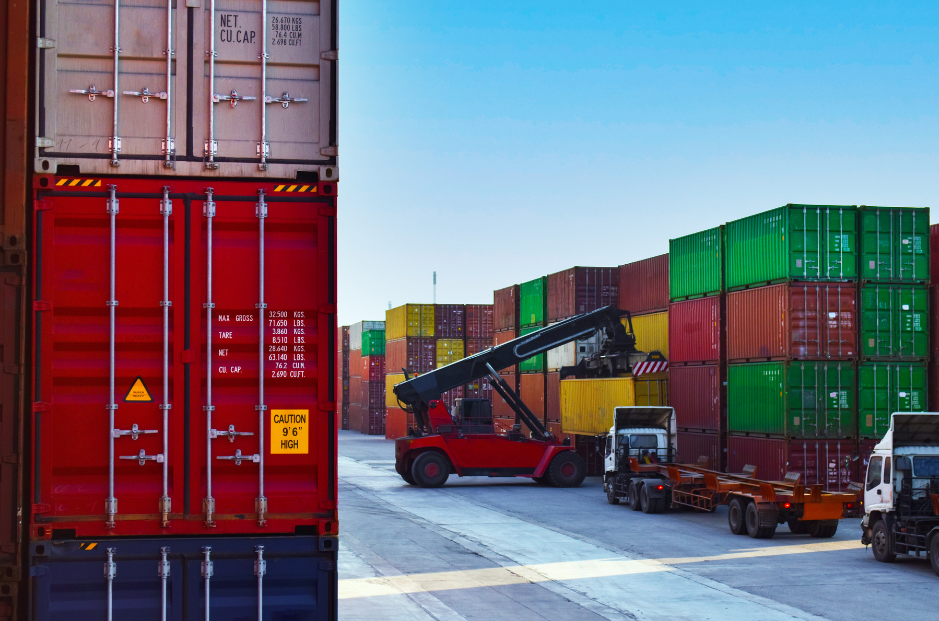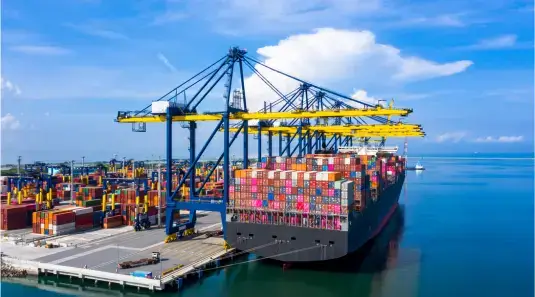shipping & mobility
Transforming Global Commerce through Innovation
Global shipping is the linchpin of the world economy, ferrying over 80% of goods across international waters. Since the 1990s, the forces of globalization coupled with the economic and environmental advantages of maritime transportation have propelled the shipping industry into a central position in global trade. This lifeline of international commerce facilitates the movement of essential commodities such as food, fuel, and raw materials, directly influencing connectivity between nations and the quality of life for billions worldwide.
The global fleet comprises approximately 98,000 active vessels, boasting a collective capacity exceeding 2.3 billion tons. Container ships, numbering around 6,500, constitute a significant portion, with a combined capacity of approximately 26 million TEU (twenty-foot equivalent unit). Annual fuel consumption by the merchant fleet accounts for nearly 10% of the world’s fuel consumption, reflecting the industry’s substantial environmental footprint. Despite the challenges, the value of shipping services in facilitating global trade exceeds US$550-600 billion annually, sustaining a workforce of approximately one million sailors, officers, and crew members.
Current Trends in shipping & mobility
Innovation Driving Change
In recent years, several trends have emerged, reshaping the maritime landscape. Despite global crises like the COVID-19 pandemic and geopolitical tensions, a notable surge in world trade and cargo volume has taken place, underscoring the industry’s resilience. Moreover, the construction of larger vessels has gained momentum, driven by the economic benefits of scale. However, this trend also poses safety concerns and necessitates suitable coastal infrastructure.
The integration of advanced technology is revolutionizing maritime operations, both on ships and across the global supply chain. From fuel-efficient propulsion systems to AI-driven route optimization, technological innovations are enhancing efficiency and sustainability. Major carriers are investing in eco-friendly alternatives like LNG and methanol, aiming to comply with stringent environmental regulations while reducing operational costs.
Challenges Facing shipping & mobility
Environmental and Economic Hurdles
Stricter environmental regulations, spearheaded by organizations like the International Maritime Organization (IMO), are compelling the industry to adopt greener practices. Initiatives like the “Strategy to Reduce GHG Emissions from Ships” set ambitious targets for carbon emission reduction, prompting the development of cleaner propulsion systems and eco-friendly fuels. Despite the financial challenges posed by regulatory compliance, these measures drive innovation and propel the industry towards a more sustainable future.
Paving the Way Forward
Green technologies have a number of areas which are ripe for innovation, including those aimed at improving vessel efficiency and reducing emissions, supply chain optimization solutions leveraging AI, and infrastructure projects enhancing port efficiency. By harnessing Israel’s legacy of innovation and entrepreneurship, stakeholders aim to position the country as a key player in the global shipping landscape.
Towards a Sustainable Future: As the maritime industry navigates the twin challenges of globalization and environmental sustainability, innovation emerges as crucial. By embracing technological advancements and adopting eco-friendly practices, the sector charts a course towards a cleaner, more efficient future. Through collaboration and ingenuity, stakeholders aim to ensure smooth sailing for global trade while safeguarding the health of our oceans and planet.






